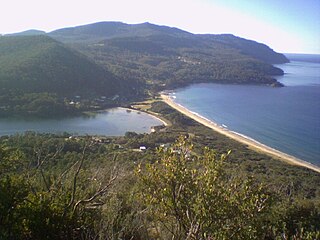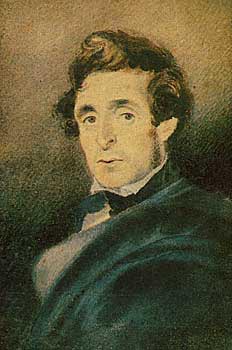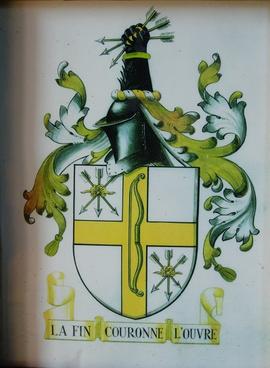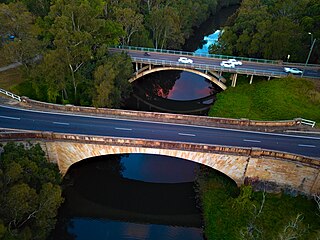The history of Tasmania begins at the end of the Last Glacial Period when it is believed that the island was joined to the Australian mainland. Little is known of the human history of the island until the British colonisation of Tasmania in the 19th century.
Richmond is a town in Tasmania about 25 km north-east of Hobart, in the Coal River region, between the Midland Highway and Tasman Highway. At the 2006 census, Richmond had a population of 880.

Longford is a town in the northern midlands of Tasmania, Australia. It lies 145 m above sea level at the convergence of the Macquarie River and the South Esk River, 21 km south of Launceston and a 15-minute drive from the airport. It is just south of the Illawarra Road, a road connecting the Bass and Midland Highways. It has a population of 3,863 and is part of the Northern Midlands Council area. The region is predominantly agricultural, noted for wool, dairy produce and stock breeding.

The Bridgewater Bridge is a combined road and rail bridge that carries the Midland Highway and South Railway Line across the Derwent River in Hobart, Tasmania, Australia. This steel truss vertical lift bridge and specially-built causeway connect the Hobart suburbs of Bridgewater and Granton. The bridge was completed in 1946 and accommodates a two-lane highway, a single track railway and a grade-separated footpath.

Bothwell, Tasmania is a small town with a population at the 2021 census of 499. Situated in central Tasmania on the River Clyde in a broad valley, it is notable for hunting and being a lake district. It is part of the municipality of Central Highlands Council and celebrated the bicentenary of its founding in 2022. Nearby locations include Hollow Tree, Hamilton, Ouse and Kempton.

The Lennox Bridge is a heritage-listed sandstone single arch bridge across the Parramatta River, located in Parramatta in Western Sydney, New South Wales, Australia. The bridge was designed by and built under the supervision of David Lennox, the first Colonial Superintendent of Bridges using convict labour between 1836 and 1839. The Lennox Bridge is the third oldest surviving masonry bridge in New South Wales. The bridge carries Church Street, the main north-south street of Parramatta's central business district. It was added to the New South Wales State Heritage Register on 2 April 1999.
The Richmond Bridge is a heritage-listed arch bridge located on the B31 in Richmond, 25 kilometres (15.5 mi) north of Hobart in Tasmania, Australia. It is the oldest stone span bridge in Australia. In 2005, the bridge was recognised as an outstanding historic place and added to the Australian National Heritage List.

Eaglehawk Neck, officially Teralina / Eaglehawk Neck, is a narrow isthmus that connects the Tasman Peninsula with the Forestier Peninsula and hence to the rest of Tasmania, Australia.

Maritime Museum Tasmania is a privately operated maritime museum dedicated to the history of Tasmania's association with the sea, ships, and ship-building, and is located at Carnegie House in Sullivans Cove, Hobart, Tasmania.
John Lee Archer was the Civil Engineer and Colonial Architect in Van Diemen's Land, serving from 1827 to 1838. During his tenure, Archer was responsible for all Tasmanian government buildings including those for penal and military purposes.

Ross is a village in the Midlands of the state of Tasmania in Australia. On the Macquarie River, Ross is located 78 km south of Launceston and 117 km north of Hobart. The town is listed on the Register of the National Estate and is noted for its historic bridge, original sandstone buildings and convict history.

Campbell Town is a town in Tasmania, Australia, on the Midland Highway. At the 2021 census, the town had a population of 823.
James Blackburn was an English civil engineer, surveyor and architect best known for his work in Australia, where he had been transported as a sentence for forgery. According to the Australian Dictionary of Biography, Blackburn "has claims to be considered one of the greatest engineers of his period in Australia, and his architectural achievements established him as Tasmania's most advanced and original architect." He was key to the formation of the Department of Public Works in 1839, serving as one of its core members under Alexander Cheyne.

Daniel Herbert (1802–1868), a Tasmanian convict, was a skilled stonemason who, with co-convict James Colbeck, oversaw the building of the Ross Bridge and embellished it with interesting and satirical carvings.

William Buelow Gould was an English and Van Diemonian (Tasmanian) painter. He was transported to Australia as a convict in 1827, after which he would become one of the most important early artists in the colony, despite never really separating himself from his life of crime.
James Colbeck was the lead stonemason on the Ross Bridge, Ross, Tasmania. Both he and Daniel Herbert received full pardons for their work on the bridge.

The Archer family are a notable family in Tasmania, Australia, prominent in society, business and politics of Tasmania for the last two centuries. They are best known today for their now world-heritage listed farm estates, Brickendon Estate and Woolmers Estate, but have contributed to many areas of Tasmania throughout their history. Other members of the family have been Mayors of Hertford in England and participated in the American Civil War.
Roderic O'Connor (1784–1860) was an Irish Australian landowner and public official, most notable for his activities as a land commissioner in Tasmania. He became one of the biggest landowners in Tasmania, and oversaw the modernisation of the land, typically using the forced labour of convicts.

The Lansdowne Bridge is a heritage-listed road bridge that carries the northbound carriageway of the Hume Highway across Prospect Creek between Lansvale and Lansdowne. Situated in southwestern Sydney it is located on the boundary of the Fairfield and Canterbury-Bankstown local government areas. The bridge was named in honour of Henry Petty-Fitzmaurice, 3rd Marquess of Lansdowne (1780–1863), an Irish Whig politician of the British Parliament and associate of the NSW Governor of the day, Sir Richard Bourke.

St John's Anglican Church is an Anglican church located in New Town, Tasmania, Australia, is notable for its unbroken record of use as a parish church, from the first service on 20 December 1835 up to the present. The parish is administered by the Anglican Diocese of Tasmania.















